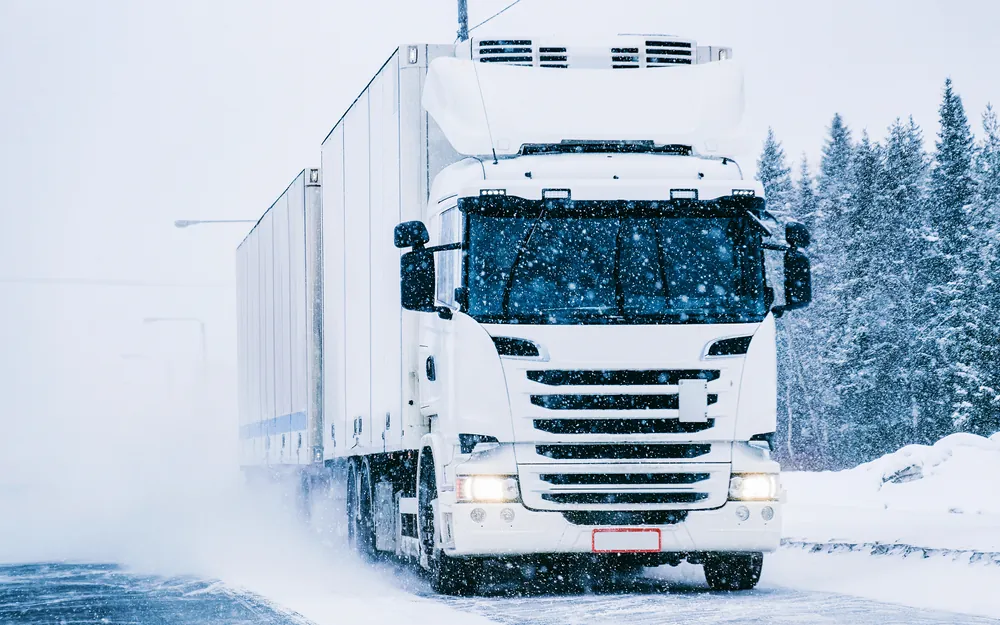
7 Ways Heated Containers Elevate Modern Logistics
In an era where the precise transport of temperature-sensitive cargo is of paramount importance, heated shipping containers have emerged as a transformative solution, revolutionizing logistics by ensuring the integrity of goods in transit and providing seven key benefits that enhance the efficiency and reliability of modern supply chain management.
In the world of modern logistics, the concept of heated shipping containers is reshaping the way goods are transported across various industries. These specialized containers are designed to maintain precise temperature control during transit, offering a solution to the ever-growing demand for the safe and efficient transport of temperature-sensitive cargo.
Temperature control in logistics is not merely a matter of convenience; it’s a critical aspect that can determine the quality and integrity of goods in transit. From pharmaceuticals and perishable food items to high-value electronics, the significance of maintaining optimal temperature conditions cannot be overstated. The failure to do so can result in costly losses, product spoilage, and even compromised safety, which is why the advent of heated shipping containers has become a game-changer in the realm of modern supply chain management. In this article, we will explore how heated shipping containers are meeting this need and offering a multitude of benefits for the logistics industry.
Thousands of businesses trust FreightCenter to move their freight faster, smarter, and cheaper! From unbeatable rates to top-notch service, our customers are raving about their shipping success.
See why they keep coming back!
Award-Winning Service, Trusted by Shippers Everywhere!
- 2021, 2017 & 2016 Food Logistics’ Top Green Providers
- 2021 & 2018 Supply & Demand Chain Executives’ Pros to Know: Matthew Brosious
- 2020 & 2019 Top Food Logistics’ 3PL & Cold Storage Provider Award
- 2020 & 2019 Business Observer’s Top 500 Companies on the Gulf Coast
- 2020 & 2017 SmartWay® Transport Partner
- 2020 & 2017 Food Logistics’ Champions: Rock Stars of the Supply Chain
- 2020 Best of Palm Harbor Awards for Local Businesses
- 2017 Green Supply Chain Award from Supply & Demand Chain Executive
- 2017 Tampa Bay Business Journal Heroes at Work
- 2016, 2015, & 2012 Food Logistics Top 100 Software and Technology Providers
- 2013 Tampa Bay Business 100 by Tampa Bay Business Journal
- 2013 Top 100 Great Supply Chain Partners by SupplyChainBrain
- 2012 TIA Samaritan Award Honorable Mention
- 2012, 2011 & 2010 TBBJ Fast 50 Recipient
- 2013, 2011, & 2010 Diversity Business Top Businesses

Choose FreightCenter for Shipping
- Expertise in Winter Shipping Commodities: FreightCenter boasts extensive experience and proficiency in handling winter shipments. They grasp the unique requirements and challenges of shipping delicate and valuable cargo, ensuring proper packaging, handling, and transportation.
- Wide Range of Transportation Options: FreightCenter offers a diverse array of transportation options tailored to your specific cargo shipping needs. Whether you require trucking, rail, sea, or air freight, they can provide flexible solutions that accommodate the size, volume, and urgency of your winter shipments.
- Compliance with Safety and Regulatory Standards: FreightCenter excels in navigating transportation regulations and adhering to safety standards. They ensure that your winter shipments comply with relevant regulations, including proper labeling, documentation, and adherence to any specific requirements.
- Insurance Coverage: Recognizing the value of your shipments, FreightCenter offers comprehensive insurance options to provide protection and peace of mind. Insurance coverage helps mitigate risks associated with loss, damage, or unforeseen circumstances during transit.
- Real-time Tracking and Communication: FreightCenter employs advanced tracking technologies that grant real-time visibility into the status of your winter shipment commodities. This enables you to easily monitor the progress of your shipment and receive proactive updates regarding potential delays or issues. Their effective communication channels ensure open lines of communication for swift problem-solving.
Heated Containers for Shipping
Heated containers represent a technological marvel in the realm of perishable shipping solutions, addressing the need for precise temperature control, especially during the challenging winter freight season. These containers operate on the fundamental principle of maintaining a consistent and controlled internal temperature throughout the shipping process.
To achieve this, heated containers are equipped with state-of-the-art heating systems that can generate and maintain the desired temperature within the container’s insulated walls. This technology typically utilizes electric heating elements or other advanced heating mechanisms. The temperature settings are programmable, allowing logistics professionals to specify the exact temperature range required for the cargo.
The advanced features and components integrated into heated shipping containers ensure their effectiveness in preserving the integrity of temperature-sensitive cargo. These features encompass not only the heating systems but also insulation materials, temperature monitoring and control systems, and sophisticated data logging capabilities.
The insulation materials used in these containers are designed to minimize heat transfer and maintain a stable internal environment, even in the face of extreme external temperatures. Additionally, temperature control and monitoring systems continuously assess and regulate the conditions inside the container, making real-time adjustments as necessary to keep the cargo within the specified temperature range. These systems often come equipped with alarms to alert logistics professionals to any deviations from the set parameters.
In an age where data is integral to effective logistics management, heated shipping containers are equipped with data logging capabilities that record and store temperature data throughout the journey. This data not only provides transparency and accountability but also enables post-shipment analysis to ensure the cargo’s quality and compliance with regulations.
These advanced features and components collectively make heated containers a reliable and sophisticated solution for the transportation of temperature-sensitive goods, particularly during the challenging winter freight season.
The key benefits of heated containers, including temperature consistency, versatility, cost savings, extended shelf life, environmental impact, improved compliance, and enhanced market opportunities, collectively offer a holistic solution that not only safeguards cargo integrity but also optimizes efficiency, reduces waste, and expands market reach in the dynamic landscape of modern logistics, especially during the challenging winter freight season.
The foremost advantage of heated containers is their ability to maintain consistent temperatures throughout the shipping journey. This consistency is achieved through sophisticated temperature control systems that continually assess and regulate the internal environment, adapting to external conditions.
Heated shipping containers are remarkably versatile, accommodating a wide array of temperature-sensitive cargo. From fresh produce and seafood to medical supplies and high-value electronics, these containers serve as a dependable solution for diverse industries.
Heated containers can lead to substantial cost savings by reducing losses associated with temperature-sensitive cargo. The precise temperature control they offer minimizes the risk of goods spoiling or becoming unsellable due to temperature fluctuations.
The impact of heated containers on perishable goods is profound. By maintaining optimal temperatures, these containers extend the shelf life of goods, reducing the urgency of their sale and allowing for broader distribution.
Heated containers play a pivotal role in reducing food waste, which has substantial environmental implications. By preventing spoilage and extending the life of perishable goods, they contribute to a more sustainable supply chain.
Heated containers aid in meeting regulatory requirements, particularly when transporting temperature-sensitive pharmaceuticals, food, or chemicals. They offer the necessary control and monitoring systems to demonstrate compliance.
Heated containers open up new market opportunities for various industries by enabling the reliable transport of temperature-sensitive goods to regions that were previously considered challenging due to extreme weather conditions.


FreightCenter Winter Shipping
Choosing Your Carrier
There is no requirement to use the official carrier, and you stand to save a lot of money when you use a 3PL like FreightCenter to book your freight shipments. What’s more, when you call FreightCenter to take care of your shipping, you’ll receive excellent service for a fraction of the cost. The key is competition; FreightCenter is where top carriers compete for your business. Want proof?
Use our instant freight quote tool to receive estimates from numerous carriers, or speak to one of our freight shipping experts by calling us at 800.716.7608. FreightCenter takes care of all paperwork and scheduling and makes sure your materials get there on time and intact.
Frequently Asked Questions
Q. What are heated shipping containers, and how do they work?
A. Heated shipping containers are specialized containers designed to maintain a controlled and consistent internal temperature throughout the shipping journey. They work by utilizing advanced heating systems, often electric or other innovative mechanisms, to generate and maintain the desired temperature within the container. Insulation materials are used to minimize heat transfer, and temperature control and monitoring systems continuously regulate the internal environment, making real-time adjustments as necessary to keep the cargo within the specified temperature range.
Q. Why is there a growing need for heated shipping containers?
A. The demand for heated shipping containers is on the rise due to the expansion of industries relying on the safe transport of temperature-sensitive cargo. From pharmaceuticals and perishable food items to high-value electronics, maintaining precise temperature control during transit has become increasingly important. Especially during the winter months, heated containers are essential for preventing cargo spoilage and maintaining product integrity.
Q. Are there any potential drawbacks to using heated containers?
A. Yes, there are potential drawbacks to consider. These include increased energy consumption, the initial investment required to acquire heated containers and infrastructure, the need for regular maintenance, and limitations on availability in certain regions or for specific cargo types.
Q. How can challenges associated with heated containers be mitigated?
A. Challenges can be mitigated by implementing energy-efficient practices, evaluating long-term cost savings to justify the initial investment, establishing a proactive maintenance schedule, considering alternative solutions in areas where heated containers are not readily available, and investing in real-time tracking and monitoring systems for cargo.
Frequently Asked Questions
Q. What are heated shipping containers, and how do they work?
Heated shipping containers are specialized containers designed to maintain a controlled and consistent internal temperature throughout the shipping journey. They work by utilizing advanced heating systems, often electric or other innovative mechanisms, to generate and maintain the desired temperature within the container. Insulation materials are used to minimize heat transfer, and temperature control and monitoring systems continuously regulate the internal environment, making real-time adjustments as necessary to keep the cargo within the specified temperature range.
Q. Why is there a growing need for heated shipping containers?
The demand for heated shipping containers is on the rise due to the expansion of industries relying on the safe transport of temperature-sensitive cargo. From pharmaceuticals and perishable food items to high-value electronics, maintaining precise temperature control during transit has become increasingly important. Especially during the winter months, heated containers are essential for preventing cargo spoilage and maintaining product integrity.
Q. Are there any potential drawbacks to using heated containers?
Yes, there are potential drawbacks to consider. These include increased energy consumption, the initial investment required to acquire heated containers and infrastructure, the need for regular maintenance, and limitations on availability in certain regions or for specific cargo types.
Q. How can challenges associated with heated containers be mitigated?
Challenges can be mitigated by implementing energy-efficient practices, evaluating long-term cost savings to justify the initial investment, establishing a proactive maintenance schedule, considering alternative solutions in areas where heated containers are not readily available, and investing in real-time tracking and monitoring systems for cargo.


